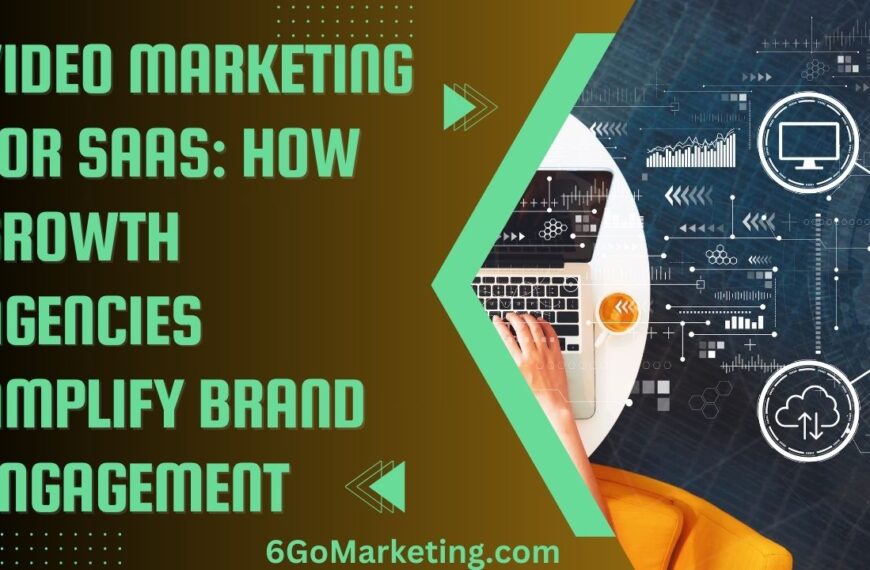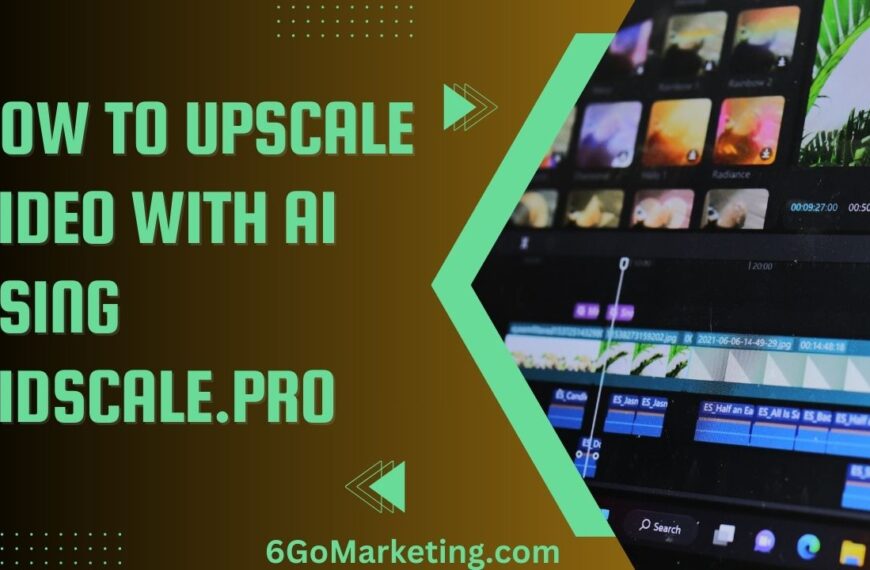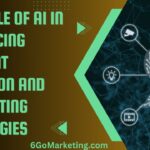The Software as a Service (SaaS) industry has experienced tremendous growth over the past decade. As more companies shift towards cloud-based services, the competition among SaaS providers has intensified.
In this competitive landscape, design has become a crucial differentiator. The user experience (UX) and visual appeal of a SaaS product can make or break its success. Graphic design, therefore, plays a pivotal role in defining how users perceive and interact with these products.
This blog post delves into the latest graphic design trends in the SaaS industry, exploring how they shape user experiences, enhance brand identity, and drive customer engagement.
The Importance of Design in SaaS
Before diving into the trends, it’s essential to understand why design matters so much in the SaaS industry. According to Adobe, 38% of people will stop engaging with a website if the content or layout is unattractive. This statistic underlines the importance of having a visually appealing and user-friendly interface.
SaaS products are typically designed to solve complex problems or streamline business processes. However, no matter how powerful the features are, if the design is not intuitive and engaging, users may struggle to adopt the product. This is where graphic design comes into play. It’s not just about making things look good; it’s about creating an experience that is seamless, enjoyable, and effective.
| Key Reasons Why Design Matters in SaaS | Explanation |
| First Impressions | A visually appealing design attracts users. |
| User Experience (UX) | Good design enhances usability and engagement. |
| Brand Identity | Consistent design strengthens brand recognition. |
| Differentiation | Unique design sets products apart from competitors. |
Trend 1: Minimalism with a Purpose
Minimalism has been a dominant trend in graphic design for several years, and it continues to be a significant influence in the SaaS industry. The principle of “less is more” is especially relevant for SaaS products, where simplicity and clarity are essential.
Key Features of Minimalist Design:
Clean Layouts: Minimalist designs focus on uncluttered interfaces with ample white space, allowing users to focus on the most important elements.
Limited Color Palettes: A restricted color palette, often using neutral tones or a single accent color, helps to maintain a clean and cohesive look.
Simple Typography: Sans-serif fonts and clean, legible typography are commonly used in minimalist designs to enhance readability.
However, minimalism in SaaS is not just about aesthetics; it’s about function. The goal is to remove distractions and guide users towards taking specific actions, such as signing up for a service or completing a task.
Example: Slack’s User Interface
Slack, a leading SaaS communication platform, exemplifies minimalist design. Its interface is straightforward, with a clean layout and a limited color scheme. The focus is on functionality, allowing users to navigate and communicate effortlessly.
| Advantages of Minimalism in SaaS Design | Impact on User Experience |
| Reduces cognitive load | Helps users process information quickly. |
| Enhances focus | Directs attention to key features or actions. |
| Improves navigation | Simplifies the user journey. |
| Increases loading speed | Fewer elements lead to faster performance. |
Trend 2: Dark Mode
Dark mode has gained popularity across various digital platforms, and it’s now a major trend in the SaaS industry. Dark mode refers to a design style where the interface uses dark backgrounds with light text and elements. This trend is not just about aesthetics; it has practical benefits as well.
Benefits of Dark Mode:
Reduced Eye Strain: Dark mode is easier on the eyes, especially in low-light environments. This can enhance the user experience during extended use.
Energy Efficiency: On OLED screens, dark mode can save battery life by using less power to display black pixels.
Focus on Content: Dark mode can make content stand out more, as the reduced brightness draws attention to the text and key elements.
Many SaaS products, including popular tools like GitHub and Microsoft Teams, now offer dark mode as an option. This trend reflects the growing demand for user customization and accessibility.
Example: GitHub’s Dark Mode
GitHub introduced dark mode to cater to users who prefer working in low-light environments. The dark interface reduces glare and helps developers focus on code without straining their eyes.
| Pros and Cons of Dark Mode | Explanation |
| Pros | |
| Reduces eye strain | Ideal for prolonged use in low-light settings. |
| Saves battery life | Particularly beneficial for OLED devices. |
| Enhances visual focus | Key elements stand out against a dark background. |
| Cons | |
| May reduce readability in bright environments | Not ideal for all lighting conditions. |
| Requires additional design effort | Designers must create and maintain two versions of the UI. |
Trend 3: Micro-Interactions
Micro-interactions are subtle animations or visual effects that occur when users interact with a product. These can include things like button animations, hover effects, loading spinners, or notification alerts. While micro-interactions may seem small, they have a big impact on the overall user experience.
The Role of Micro-Interactions in SaaS:
Providing Feedback: Micro-interactions give users immediate feedback on their actions, such as a button changing color when clicked, confirming that the action was successful.
Guiding User Behavior: Subtle animations can guide users on how to interact with the product, making the interface more intuitive.
Enhancing User Engagement: These small details add a layer of polish to the product, making it feel more engaging and dynamic.
Micro-interactions are particularly important in SaaS products, where users often perform repetitive tasks. They help to create a smoother, more enjoyable user experience.
Example: Dropbox’s File Upload Animation
Dropbox uses a simple, yet effective micro-interaction when users upload files. As the file is uploaded, a small animation plays, providing visual confirmation that the upload is in progress and reassuring users that their action was successful.
| Advantages of Micro-Interactions | Impact on User Experience |
| Provides instant feedback | Confirms that user actions are recognized. |
| Improves learnability | Guides users on how to interact with the product. |
| Adds delight | Creates a more enjoyable and engaging experience. |
Trend 4: Custom Illustrations and Icons
Custom illustrations and icons have become a defining trend in SaaS design. While stock imagery was once the norm, more companies are now investing in custom visuals that reflect their brand’s unique personality and values.
Why Custom Illustrations Matter:
Brand Differentiation: Custom illustrations set a brand apart from competitors by offering a unique and recognizable visual style.
Enhanced Communication: Illustrations can simplify complex concepts, making it easier for users to understand the product’s features and benefits.
Emotional Connection: Visuals that are tailored to the brand’s voice can evoke emotions and create a stronger connection with users.
Custom illustrations and icons are particularly effective in onboarding flows, explainer pages, and product tours. They add a human touch to the digital experience, making the product feel more approachable and relatable.
Example: Asana’s Custom Illustrations
Asana, a popular project management tool, uses custom illustrations throughout its platform. These visuals are not only visually appealing but also help users quickly grasp the benefits of the product and how to use it effectively.
| Benefits of Custom Illustrations | Explanation |
| Differentiates brand | Creates a unique visual identity. |
| Simplifies communication | Makes complex ideas more understandable. |
| Builds emotional connection | Engages users on a deeper level. |
Trend 5: Bold Typography
Typography is a powerful tool in graphic design, and bold, attention-grabbing fonts have become increasingly popular in the SaaS industry. Bold typography is used to create hierarchy, draw attention to key messages, and establish a strong brand identity. By using a logo maker and other design tools, businesses can easily integrate bold typography into their visual branding strategy.
Key Features of Bold Typography:
Strong Headlines: Large, bold fonts are often used for headlines and key messages, making them stand out and guiding the user’s attention.
Minimalist Pairings: Bold fonts are typically paired with simpler, smaller body text to create a clear visual hierarchy.
Brand Personality: The choice of typeface can convey the brand’s personality, whether it’s modern, traditional, playful, or serious.
Bold typography works well in SaaS design because it communicates confidence and clarity. In an industry where complex information needs to be conveyed quickly and effectively, bold fonts help ensure that the most important messages are seen and understood.
Example: Notion’s Use of Bold Typography
Notion, an all-in-one workspace tool, uses bold typography to create a clean and modern interface. The large headlines guide users through the platform, while the minimalist design keeps the focus on content.
| Advantages of Bold Typography | Impact on User Experience |
| Creates visual hierarchy | Guides users to the most important information. |
| Enhances readability | Makes key messages clear and easy to read. |
| Reinforces brand identity | Conveys the brand’s personality and tone. |
Trend 6: Data Visualization
SaaS products often handle large amounts of data, and effective data visualization has become a crucial aspect of design. Presenting data in a clear, concise, and visually appealing manner helps users understand complex information quickly and make informed decisions. The growing emphasis on data-driven insights has made data visualization a key design trend in the SaaS industry.
Key Aspects of Data Visualization in SaaS:
- Interactive Dashboards: Many SaaS products now feature interactive dashboards that allow users to customize how they view and analyze data. These dashboards often include filters, drill-downs, and other tools that make it easier to explore and interpret data.
- Simple and Clean Visuals: Data visualizations need to be simple, with a focus on clarity. Overloading users with too many details can lead to confusion. Effective visualizations highlight key metrics and trends without overwhelming the user.
- Storytelling with Data: Beyond just presenting numbers, good data visualization tells a story. It guides the user through the data, providing context and insights that help them understand the significance of the information.
Example: Tableau’s Data Visualization Tools
Tableau, a leading data visualization platform, allows users to create custom dashboards that present data in various formats, including charts, graphs, and maps. The platform’s focus on clarity and interactivity makes it easier for users to derive actionable insights from their data.
| Benefits of Effective Data Visualization | Explanation |
| Improves data comprehension | Helps users quickly understand complex data. |
| Enhances decision-making | Provides insights that guide strategic choices. |
| Increases user engagement | Interactive visuals encourage exploration. |
Trend 7: Personalization and Adaptive Design
Personalization has become a significant trend in SaaS, with users increasingly expecting experiences tailored to their needs and preferences. Adaptive design, which adjusts based on user behavior and data, is a key component of this trend. Graphic designers play a crucial role in creating interfaces that can adapt to different users, offering a more personalized experience.
Elements of Personalization in SaaS:
- Dynamic Content: Content that changes based on user behavior, preferences, or demographic data is becoming more common in SaaS products. This can include personalized dashboards, recommendations, and targeted messaging.
- Customizable Interfaces: Users appreciate the ability to customize their interface, such as rearranging dashboard widgets, choosing themes, or adjusting notification settings. This level of control enhances the user experience by making the product feel more tailored to individual needs.
- Behavioral Triggers: SaaS products are increasingly using data to trigger personalized experiences, such as sending reminders based on usage patterns or suggesting features based on user activity.
Example: HubSpot’s Adaptive CRM
HubSpot’s CRM offers a high level of personalization, allowing users to customize their dashboards and workflows. The platform adapts to the user’s behavior, offering suggestions and insights that are relevant to their specific needs.
| Benefits of Personalization and Adaptive Design | Explanation |
| Increases user engagement | Tailored experiences keep users more invested. |
| Improves user satisfaction | Users feel the product meets their specific needs. |
| Enhances product relevance | Dynamic content and features align with user goals. |
Trend 8: Motion Design
Motion design, which includes animations, transitions, and other dynamic elements, is becoming increasingly popular in SaaS interfaces. These elements not only enhance the aesthetic appeal but also improve usability by providing visual cues and guiding users through their tasks.
Applications of Motion Design in SaaS:
- Loading Animations: Motion design can make loading times feel shorter by entertaining users or providing feedback that something is happening in the background.
- Onboarding Sequences: Animated tutorials or walkthroughs help onboard new users by demonstrating how to use the product in a visually engaging way.
- Interactive Elements: Buttons, menus, and other interactive elements can use subtle animations to provide feedback, making the interface feel more responsive and intuitive.
Example: InVision’s Motion Design Elements
InVision, a design collaboration platform, uses motion design extensively in its interface. From smooth transitions between screens to interactive button animations, motion design enhances the overall user experience, making the product feel polished and intuitive.
| Advantages of Motion Design | Impact on User Experience |
| Guides user attention | Directs focus to key elements and actions. |
| Provides visual feedback | Confirms that user interactions are recognized. |
| Enhances product appeal | Makes the interface feel more dynamic and engaging. |
Trend 9: Augmented Reality (AR) and Virtual Reality (VR)
While still emerging, AR and VR are beginning to make their way into the SaaS industry, particularly in products focused on training, design, and collaboration. These technologies offer immersive experiences that can transform how users interact with software.
Applications of AR and VR in SaaS:
- Remote Collaboration: VR can create virtual meeting spaces where teams can collaborate in real-time, regardless of location. This is especially valuable for design and development teams.
- Training and Simulation: AR and VR are being used for training purposes, providing hands-on experiences that are more engaging and effective than traditional methods.
- Product Demos: SaaS companies are using AR to create interactive product demos that allow users to explore features in a more immersive way.
Example: Spatial’s Virtual Collaboration Tool
Spatial is a VR platform designed for team collaboration. It allows users to create virtual workspaces where they can interact with 3D models, documents, and each other as if they were in the same room. This innovative use of VR is setting the stage for new possibilities in SaaS.
| Benefits of AR and VR in SaaS | Explanation |
| Enhances remote collaboration | Creates immersive environments for team interactions. |
| Improves training effectiveness | Provides hands-on, interactive learning experiences. |
| Innovates product engagement | Offers new ways to experience and demo software. |
Conclusion
The SaaS industry is evolving rapidly, and graphic design plays a crucial role in shaping the future of these products. From minimalist interfaces to personalized experiences, the trends discussed in this blog post highlight the importance of design in creating successful SaaS products.
As user expectations continue to rise, staying ahead of design trends is essential for SaaS companies looking to differentiate themselves in a crowded market.
The trends of minimalism, dark mode, micro-interactions, custom illustrations, bold typography, data visualization, personalization, motion design, and the emerging potential of AR and VR all point to a future where design is more than just an afterthought—it’s a strategic asset.
Companies that embrace these trends and prioritize design in their development processes will be well-positioned to create products that not only meet but exceed user expectations.
In conclusion, graphic design in the SaaS industry is about more than just making software look good; it’s about enhancing functionality, improving user experiences, and ultimately driving business success. As these trends continue to develop, the role of graphic designers will become even more integral to the innovation and growth of SaaS products.










